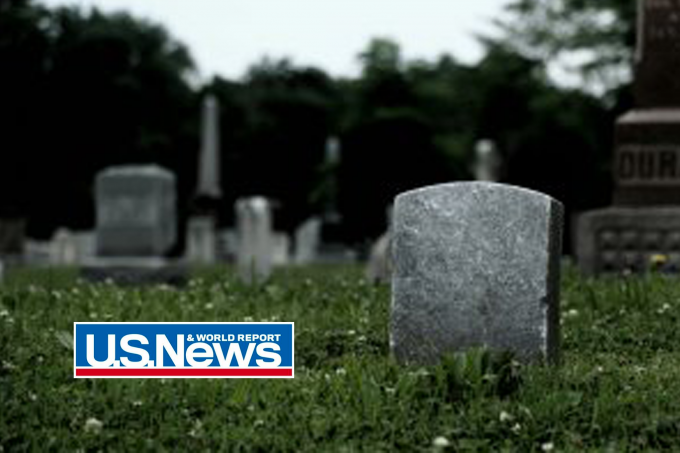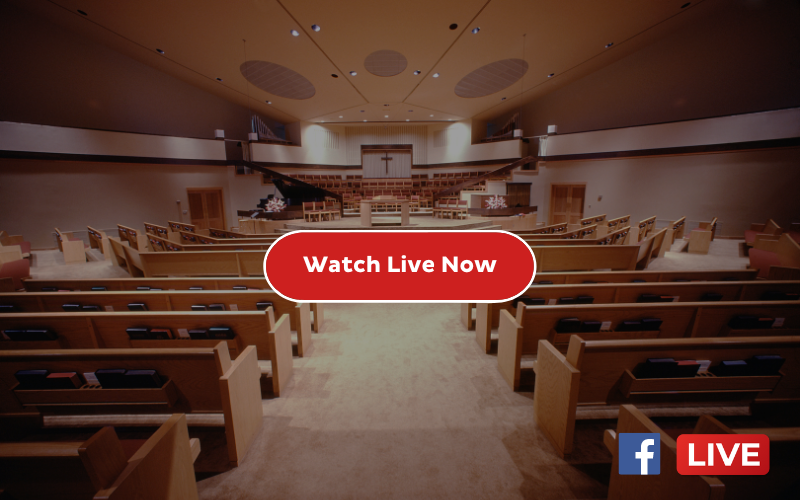Safely Honoring the Dead During the Coronavirus Pandemic

THE LOSS OF A LOVED ONE can be difficult to deal with at any time. But in the era of COVID-19, when physical, or social, distancing is the norm, family and friends wanting to pay their last respects to the deceased face special challenges.
“Often, for loved ones and friends to begin the natural grieving process, being present at a memorial or funeral allows them to psychologically process the finality of the loss,” says Dr. Shoshana Ungerleider, an internist who practices hospital medicine at California Pacific Medical Center in San Francisco. Ungerleider founded the nonprofit End Well, which seeks to normalize conversations about death throughout life. “Without this experience, closure may be difficult.”
But that’s precisely the uncharted territory those left behind – those grieving loved ones who have died of the coronavirus or any cause – find themselves in at present. Frequently, funeral services – if held at all – are livestreamed. When people do gather for in-person services, groups are kept small and seats are arranged so that attendees sit at least 6 feet apart – per social distancing guidelines.
Stephen Kemp, a funeral director at Kemp Funeral Home & Cremation Services in Southfield, Michigan, just north of Detroit, and a spokesperson for the National Funeral Directors Association, has seen a sharp rise in funerals recently. That directly reflects the disproportionate way COVID-19 has touched urban communities and people of color, including African Americans, he says.
Kemp Funeral Home had already handled more than 50 COVID-19 deaths, as of mid-April. “It is really sobering,” he says, of the sheer number who have died from the virus locally. “I have people that I know in the community that have died.” In some cases, the new coronavirus has taken the lives of more than one family member, he says.
During the pandemic, consultations about funeral arrangements have been largely relegated to phone calls and online interactions – like going to a virtual showroom to pick a casket – versus in-person conversations. When people do come into Kemp Funeral Home, precautions are taken to keep everyone safely spaced. Staff also wear masks. However, funeral homes are encountering the same shortages in personal protective equipment that health care providers are running into. “I can tell you I’m running really low on masks and can’t get masks,” Kemp says.
Visitation times have been cut to limit person-to-person contact. When guests do come into the funeral home they're encouraged to use hand sanitizer and practice social distancing as a matter of routine.
And all manner of traditions observed by people of different ethnicities and religious backgrounds have been affected by physical distancing. Kemp, for example, has in the past done traditional dayslong services for Hmong clients – Laotians, namely, who honor the deceased by gathering together continuously from Friday until burial Monday. At present, though, “We can’t do any of those at all because of social distancing,” he says.
Christian services have likewise been dispersed. Some churches have spaced seating to accommodate having smaller, safer funeral services. But, “most churches have closed down period,” Kemp says. “I belong to the United Methodist Church, and the bishop has closed all the churches indefinitely.” Kemp schedules services at the funeral home instead. Sometimes ministers don’t want to come due to coronavirus concerns. “I can understand their trepidation,” he says. “But we make do with what we have to do to serve the family.”
Social distancing measures vary by state and even local areas, but overall there’s been a broad push to move people out of traditional gathering spaces, away from churches, temples and synagogues, along with non-religious gathering spaces like parks and homes – and even funeral homes and cemeteries.
“The cemeteries in the area, including the federal cemeteries – we cannot bring families there,” Kemp says. “So they can’t even say goodbye at the cemeteries, because cemeteries have banned processions, they have banned family members from coming to the cemetery.” In such cases, Kemp says he’ll take an iPhone video of the burial for the families, so they can see it.
As is routine, careful precautions are also taken to disinfect the body, whether a person died of COVID-19 or not. Although the virus is typically spread from person-to-person contact – from one living host to another – it can live on surfaces. So disinfection, whether of funeral home doorknobs or human remains, is taken seriously.
Once that’s done and the deceased has been embalmed – a process involving preserving the remains – “it’s no longer a hazard to the public,” Kemp says, regardless if the person had COVID-19 or hepatitis or another infectious disease. For next of kin who insist on seeing the body before that, they must stay 6 feet away – if that accommodation is even possible. As an alternative, “oftentimes I will take a photograph of their loved one before we take them to the crematory,” Kemp says.
Finding New Ways to Grieve
The considerable constraints placed on person-to-person contact, and ostensibly gatherings of any kind, has engendered various improvised approaches to honoring the dead during the pandemic.
“Most if not all cultures have mourned their dead and honored the memory of those who have died in community, and have done so with age-old ritual practices, developed over centuries in the face of dying and death,” says Teresa Berger, professor of liturgical studies and Catholic theology at Yale Divinity School and the Yale Institute of Sacred Music. “Traditionally, those rituals have involved people drawing close to each other physically, and, in particular, gathering around those most affected by a death, e.g., the loved ones of a person who has died. Under the conditions of COVID-19, many of these practices cannot be observed, owing to the need for social distancing.”
But this isn’t the only moment in history when mourning and burial rituals have been disrupted or prevented altogether. “I think it is important to remember that many, many people before us – and around us too, if we look globally – have not had the possibility of burying and mourning their dead in peace and safety,” Berger reminds. “Think of such situations as war, genocide, mass migrations or natural disasters. In all these situations, people were forced to adapt or even forego established practices of mourning, honoring and burying the dead.”
The ceremonial means by which the dead may be honored needn’t be static either. “Ritualizing is an always creative and often improvisational process, and thus not limited to times when life seems more calm and ordered,” Berger says. “So, I would encourage people to reach both deep within their particular traditions, especially their faith traditions, and also deep within themselves and their own needs, and find ways to honor and mourn their beloved dead.”
That may mean exploring the virtual ways we can come together today that weren’t available in the past – during the 1918 Spanish flu pandemic, say.
“In particular, digital social space has for years now (and long before COVID-19) become increasingly important as a communal space of mourning and remembering those who have died,” Berger emphasizes. “This of course becomes a particular resource in times of physical-social distancing.”
Families of those who’ve succumbed to the coronavirus must first come to grips with these physical limitations starting in their loved one’s last hours. “Most hospitals and other facilities are not allowing family members and other loved ones to be present at the deathbed for fear of COVID exposure,” Ungerleider points out. And that’s mirrored in the strict constraints people face in honoring the dead.
“Everyone has been forced to be flexible and quite creative in the ways that we connect with one another to honor loved ones and friends we have lost. Spiritual leaders are turning to FaceTime to provide counsel to families, families are connecting virtually to support one another,” Ungerleider says. “I spoke to a funeral director in Seattle who received FaceTime instruction from members of a local Jewish community to perform ritualistic bathing practices on the body of a temple congregant after he died.”
Among other resources available today, she says, there’s LifeWeb 360, an online platform for creating memorial scrapbooks. It also provides a resource guide for families and funeral homes to use for conducting virtual memorial services. The website GatheringUs allows people to share stories and photos, fundraise to help families with funeral expenses and donate to a nonprofit charity online. “Even the traditional brick-and-mortar mortuaries are now using OneRoom, a funeral streaming service, so that families may share stories, show video slideshows to music and replicate the experience of a ceremony with a room full of people,” Ungerleider says.
Grief Interrupted: Coping With a Loss of Tradition
It’s one thing to encourage flexibility, but quite another to cope with loss during this prolonged health crisis.
“Given that grief never has a set timeline, it is not clear how much the ongoing, necessary isolation will delay our ability to process grief,” Ungerleider says. “Without these rituals and grief support, this will likely impact the capacity for us to heal from loss.”
Experts say staying connected in any safe way possible – including by phone and video chat – to mourn with others and share struggles is critical.
“We know that if left untended, grief has long-term consequences to our mental, emotional and physical health that can impact individuals and communities far into the future,” Ungerleider says. Those struggling with so-called complicated grief can experience painful emotions for much longer, and bereavement may be heightened, or their sense of loss much more severe, inhibiting normal function. Some even attempt suicide.
While it may not always be so simple to untangle grief and depression, if you think you’re dealing with mental health issues, don’t hesitate to seek professional help. And encourage loved ones who are facing similar struggles to do the same, experts say.
For someone who is grieving the loss of a loved one to COVID-19, the death toll “ticker” that accompanies the 24/7 news coverage of the coronavirus can be a constant, traumatizing reminder of that loss, Ungerleider says. “It also can feel as though the individual losses are dehumanized as just another number. It is important for us all to remember that each death matters – the person lived a life and was important to their loved ones,” she says.
“Give yourself permission to feel your emotions. It is always important, but now more than ever. The emotions that very often surround grief – anger, sadness, anxiety and even hopelessness – are all normal,” Ungerleider says. “I encourage people to experience them, name them and fully allow these feelings to happen while approaching this with compassion toward yourself.”
.png)
.png)
